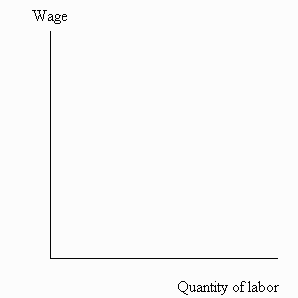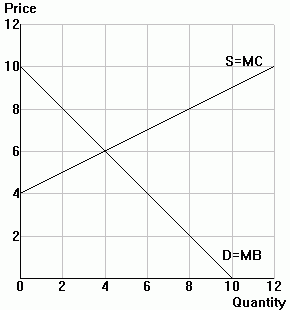| 1. | In 1879 a law was passed in Massachusetts restricting the number of hours women could work in manufacturing to no more than 10 hours per day and 60 hours per week. |  |
||
| a. | In the diagram to the right, draw a demand curve for labor in manufacturing and a male labor supply curve and total (male and female) pre-legislation labor supply curve. Indicate the equilibrium wage (W), the total quantity of labor supplied (Lt), and the quantities of men (Lm) and women (Lw) hired. (Note: men and women are equally qualified for the manufacturing jobs.) | |||
| b. | Show the effect of the legislation on the equilibrium wage and total quantity supplied of labor. | |||
| c. | Decide whether each of the following rises, falls, remains the same or changes in an uncertain direction, and explain each decision briefly: | |||
| (1) | total expenditures (W x Lt) on labor by manufacturing
employers:
|
|||
| (2) | total income (W x Lm) received by men:
|
|||
| (3) | total income (W x Lw) received by women:
|
|||
|
2. |
Decide whether the following is true or false and explain briefly:
"Removal of natural gas price ceilings is likely to cause an increase in supply which
could lower prices for consumers."
|
